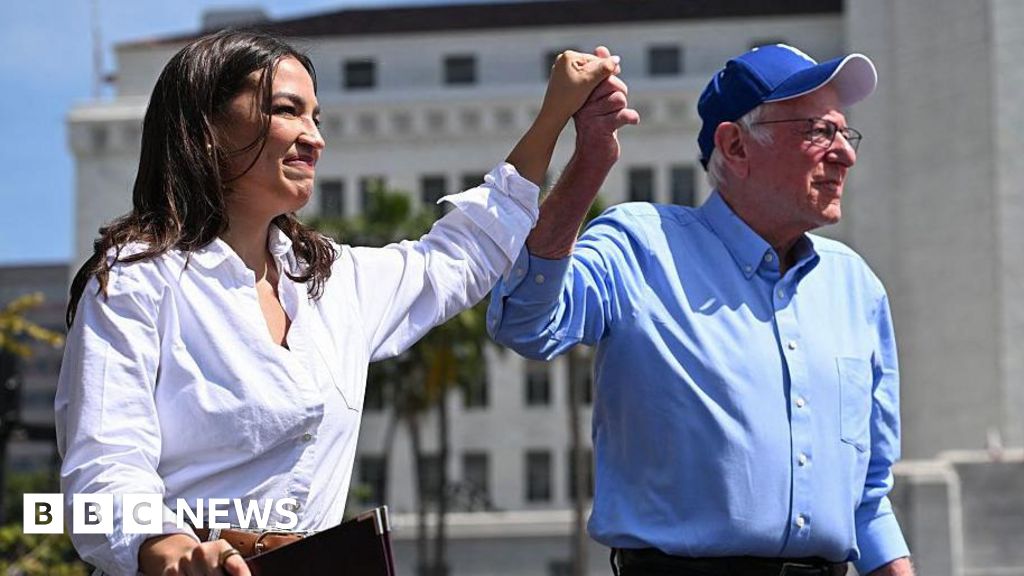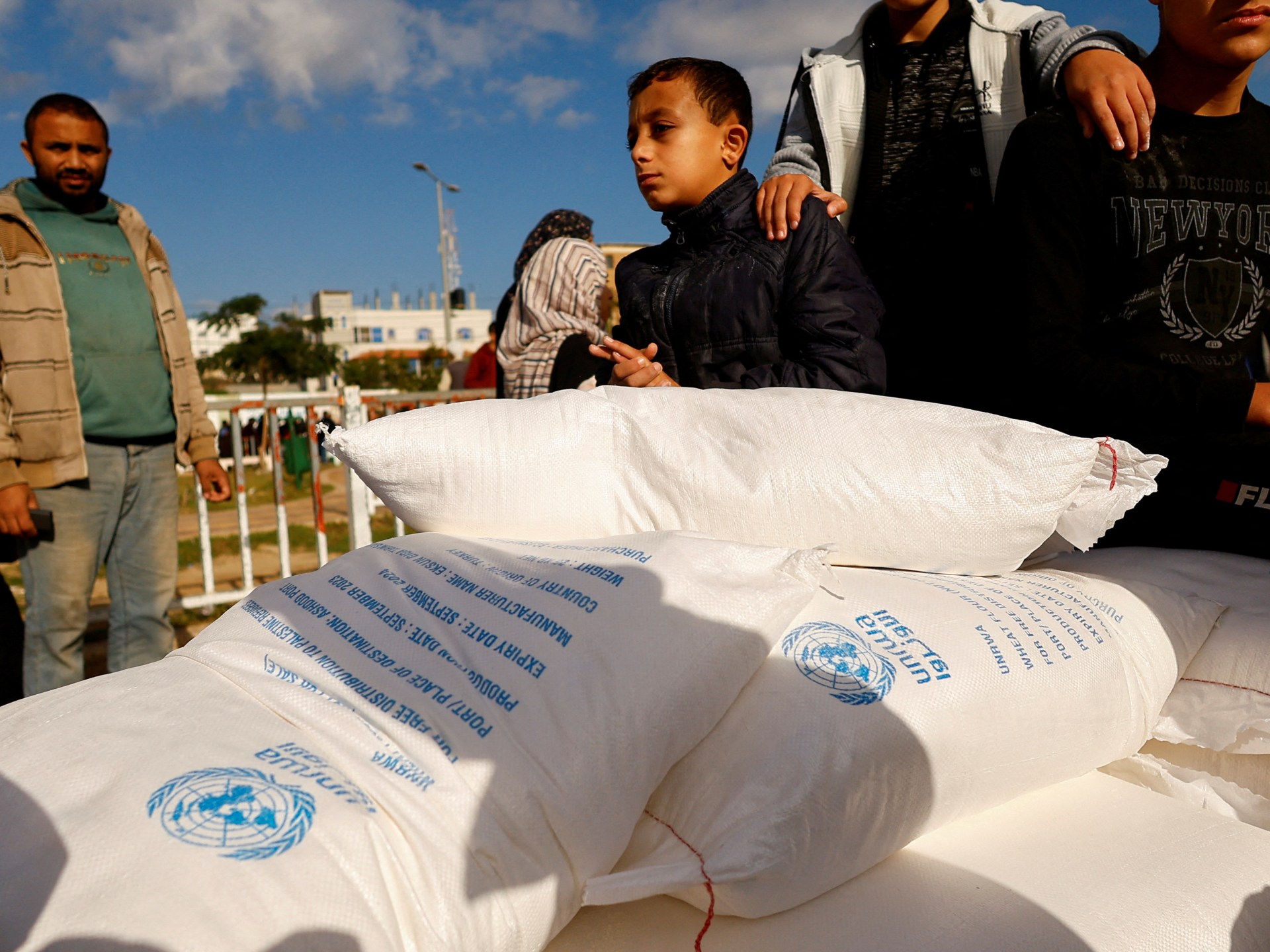What is the Gaza ceasefire ‘bridging proposal’ and will it work? | Israel-Palestine conflict News
The United States top diplomat landed in Israel on Monday with a message for those pleading for an end to the war in Gaza.
Secretary of State Antony Blinken said that he consulted with Israel’s Prime Minister Benjamin Netanyahu, who – the American official said – had accepted a “bridging proposal” for a ceasefire in Gaza.
The proposal ostensibly aims to bridge unresolved disputes between Israel and the Palestinian group Hamas in order to scale down violence in Gaza, where Israel has killed more than 40,000 people and uprooted nearly the entire 2.3 million population during the last 10 months.
Israel’s devastating war on Gaza began shortly after a Hamas-led attack on southern Israel on October 7, in which an estimated 1,139 people were killed and more than 250 taken captive.
Despite continuous efforts this year to bring about a ceasefire, and even after a proposal announced by US President Joe Biden that he said was supported by Israel and has publicly been backed by Hamas, the US has now been forced to announce the bridging proposal.
Hamas has rejected the proposal, calling it an attempt by the US to buy time “for Israel to continue its genocide”, and urged a return to the previous proposal.
With Blinken travelling the Middle East, and a new potential round of talks in Cairo this week, let’s take a closer look at the latest proposal, and what the dispute between Israel and Hamas now centres on.
Permanent ceasefire?
Israel doesn’t want a permanent ceasefire, despite engaging in “ceasefire” talks.
Israeli Prime Minister Netanyahu wants to reserve the right to resume attacks on Gaza after Israeli captives have been retrieved.
This fits with a longstanding Israeli military doctrine of carrying out “preemptive attacks” in occupied Palestinian territory to ostensibly weaken the threat coming from Palestinian fighters, as it often does in the occupied West Bank.
“Most Israelis can’t argue with what Netanyahu wants to do, which is to destroy Hamas, despite those being empty words that have no meaning,” said Ori Goldberg, an Israeli commentator on political affairs.
However, Israel’s own security brass has said that Netanyahu’s stated goal of completely destroying Hamas is impossible and amounts to “throwing sand in the eyes of the [Israeli] public”. Even Netanyahu’s defence minister, Yoav Gallant, has rubbished the idea of a “total victory” against Hamas.
Back in July, Hamas expressed willing to sign a temporary ceasefire and then indirectly continue talks that would eventually lead to a permanent one.
Netanyahu, however, has continued to add conditions and has proved unwilling to compromise.

Troop withdrawals
Hamas is calling for the departure of all Israeli troops from Gaza, beginning with a withdrawal from the Philadelphi corridor, a name used for the land that separates the enclave from Egypt.
Netanyahu, however, insists that Israeli troops must remain in the corridor – and other locations in the enclave – to preserve Israeli security and derail the smuggling of weapons to Hamas.
That, Hamas says, is a departure from the ceasefire proposal backed by Biden in May, which the Americans said at the time Israel had agreed to.
Secretary of State Blinken has tried to talk Netanyahu into watering down his new condition – which is also vehemently opposed by Egypt – by agreeing to keep a minimal number of soldiers in the Philadelphi corridor, according to Hugh Lovatt, an expert on Israel-Palestine for the European Council for Foreign Relations (ECFR).
“It seems, from my view, the US is accepting the latest Israeli conditions, but trying to water them down to some extent,” said Lovatt.
“This [proposal] is basically a bridge between the US and Israel and not Israel and Hamas,” he added.

Right of return
Israel has insisted on screening all Palestinians for weapons before allowing them to return to their homes in northern Gaza, a condition that is regarded by Palestinians as a pretext to be used to block families from returning to areas where they have been forcefully and deliberately displaced.
Israel has said that it aims to prevent Hamas fighters from regrouping in the north.
Hamas, on the other hand, says Palestinians should have total freedom of movement and that Israeli forces must withdraw in order to guarantee the safety of people in the Strip, tens of thousands of whom have been killed by Israeli forces.
The call for an unimpeded return to the north is particularly sensitive for Palestinians, who have been repeatedly expelled from their lands since the creation of Israel in 1948.
Back then, some 750,000 Palestinians were uprooted by Zionist militias – a period Palestinians refer to as the Nakba, or catastrophe. About 70 percent of Gaza’s population are from refugee families that had fled their homes in other parts of Palestine during the Nakba.

Captive exchange
On Tuesday, Israeli families of the captives in Gaza met Netanyahu to gauge the likelihood of a ceasefire. After the meeting, one of them told local reporters that the prime minister is “not sure there will be a deal”.
A ceasefire would, in theory, involve three phases, in which all Israeli captives are released in exchange for a certain number of Palestinian prisoners held by Israel.
Hamas wants a deal, but will not release captives unless Netanyahu agrees to withdraw troops from Gaza.
Netanyahu’s new ceasefire conditions, however, make the release of Israeli captives look increasingly unlikely.
“I think the Americans are playing to Netanyahu’s tune here,” Lovatt, from ECFR, told Al Jazeera. “The Americans are not just endorsing his conditionalities – that have potential to torpedo the deal – but they are letting him off the hook to do that.”
Humanitarian aid
Palestinians in Gaza are starving and in desperate need of food and medical aid.
Several UN agencies, as well as the US and other Western countries have repeatedly called on Israel to scale up aid to beleaguered civilians. The International Court of Justice also issued Israel a binding order to do so back in January.
The Israelis have often ignored these calls. Israel’s far-right finance minister, Bezalel Smotrich, said that it may even be “justified” for his country to starve 2 million Palestinians to death, but that the world won’t allow it.
Hamas, however, accuses Israel and the US of de-facto conditioning the scaling up of life-saving aid for hundreds of thousands of people on a ceasefire deal.
“The Israeli occupation and the US administration are explicitly using the policy of starvation and food denial against civilians in the Gaza Strip, as a means of political pressure, and this constitutes a war crime and a crime against humanity,” Hamas said in a news release.
Are we running out of time?
Short answer: Yes.
On Tuesday, Israel retrieved the bodies of six dead captives in Gaza, raising questions about how many left are still alive.
The captives, said the Israeli army, were found in a tunnel in Khan Younis following what it described as a “complex operation”. There was no information about how they died.
Palestinians in Gaza, meanwhile, continue to pay the price of Israel’s devastating war, which many critics say amounts to a campaign of cruel collective punishment.
Most recently, on Tuesday, Israel struck Mustafa Hafez School in Gaza City, killing 12 Palestinians, according to local rescue workers. Israel has fired at multiple schools sheltering thousands of displaced people in recent days, including an attack that killed more than 100 Palestinians on August 10.
After the attack, rescue workers found that many of the corpses were dismembered or reduced to fragments of flesh that they collected the body parts in rubbish bags.
“The longer that time drags on, the less likely Israeli hostages are to remain alive. And obviously, without a ceasefire, thousands of more Palestinians will continue to die,” Lovatt said.
Check out our Latest News and Follow us at Facebook
Original Source







